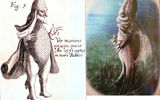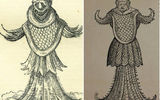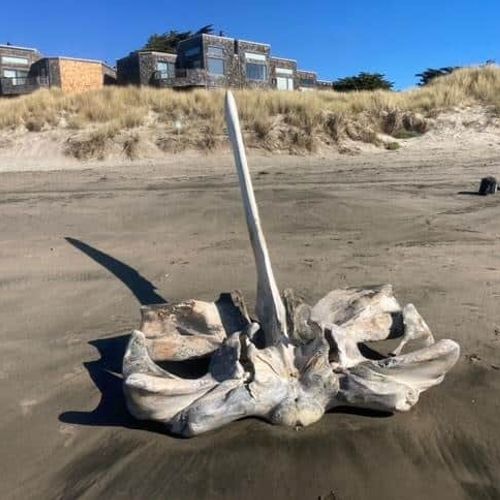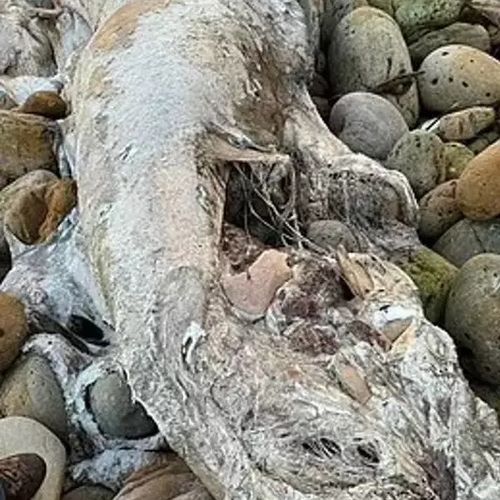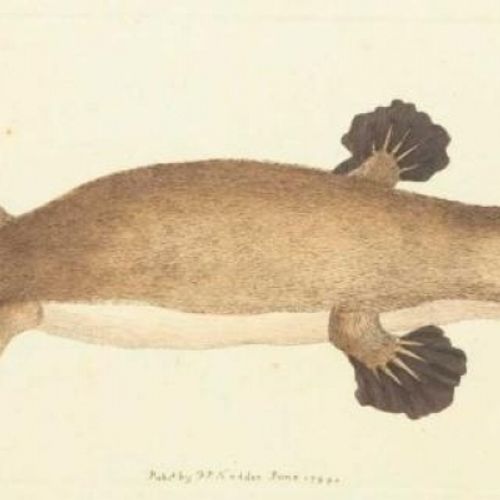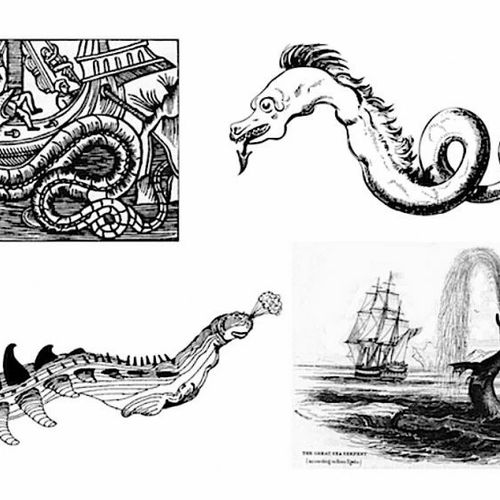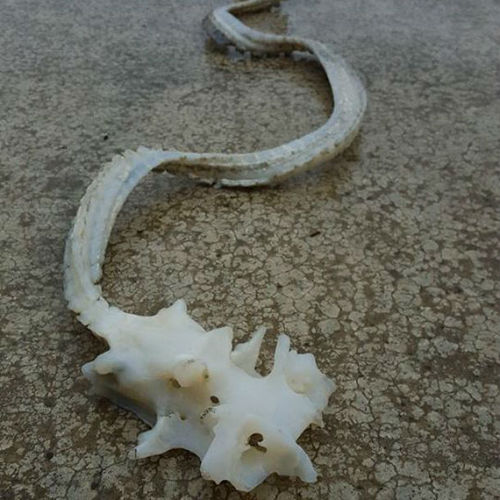
| Added | Mon, 02/10/2017 |
| Источники | |
| Дата публикации | Mon, 02/10/2017
|
| Феномены |
Call the bestiaries, the medieval collections of Zoological articles (with illustrations), detailing the various animals in prose and verse. Bestiaries were a special genre in medieval literature, combining the traits of the natural science writings and theological treatise. The character corresponds to the medieval view of nature that combines the curiosity of the mind with feelings of astonishment and horror from the unknown forces and phenomena; they constitute a well-proportioned mixture of scientific knowledge with fabulous legends and symbolic interpretations. Animals, plants and stones are extraordinary beings, full chromastone forces and a mysterious relationship to the man.
In the bestiaries, it was possible to know about the Basilisk, the Griffin, the mermaid, the Manticore, Salamander, anthropophagi, pahlavas and others. Including such bizarre marine life such as Sea monk and the Sea Bishop.
Sea Bishop
This creature according to legend, lived in the Baltic sea. The birth of this legend refers to the XVI century the surviving descriptions of the sea Bishop resembled large scaly fish with sharp lateral fins and a fin on the back, supposedly so wide that the fish could use it instead of the cloak, and the sharp crest on the head, resembling a Bishop's mitre, for which this creature got its name.
According to legend, a sea Bishop for the first time was caught by Polish fishermen in 1433. the Strange creature was delivered to the king. To the sea Bishop spoke in Polish and Latin, but he was silent in response, a sad looking people and large clear eyes. However, he refused any food and hirel eyes. In the end, he allegedly managed by signs to persuade the bishops to let him go to sea. Bishops with great difficulty managed to persuade the king, and finally, grateful creature having surrounding a cross, disappeared forever in the waters of the Baltic sea. Another sea Bishop was allegedly caught with a network already in Germany in 1531, but has lived in captivity for only two days. It was depicted by Conrad Gesner in his "History of the animal Kingdom". It is assumed that the sea Bishop is actually a giant manta (Stingray), really has a head crest and wide fins. Imagination can easily give it a resemblance to a man. However manta rays are not found in the Baltic sea, and are found in tropical waters. Then what kind of creature was it really?
Sea monk
Sea monk lived somewhere in the Northern seas. Stories about a "sea monk" is known since the early middle Ages. Here's how, for example, describes an unusual "fish" the Creator of the first "natural history" in German Conrad Magenergy (en:Konrad of Megenberg) (1349):
"Monachus marinus. The sea monk is called the beast in the image of the fish, and the top as a person; it has the head as the newly-tonsured monk. On his head the scales and around the head black wrap above the ears; wrap consists of hair, like a real monk. The monster has a custom lure people to the sea shore, doing different jumps, and when he sees that people are happy, looking at his game, it's even more fun is thrown in different directions; when can arrest the man, drags him into the water and devours. It has a face, not entirely similar to man: fish oil nose and mouth very close to the nose".
The first time a monster, described as "a fish resembling a monk with a shaved tonsure in the hood", was washed up on the Danish coast during a storm in About 1546, 1550, "sea monk" was caught in a fishing net near the town of malmö (Sweden). And once again she was caught in Denmark, as evidenced by Arild, Hvitfeld reports in the "Chronicle of the Kingdom of Denmark": "In 1550 near the Öresund caught and sent to the king in Copenhagen an unusual fish. She had a human head, and the head monk tonsure. She is dressed and scales like a monk's hood. The king commanded the fish to bury. The fish was done a few drawings that were sent to the different crowned persons and naturalists of Europe." "Fish" was not too rare and from time to time caught together with herring.
Caught in 1550, the instance is stored as a "gimmick" in the cellars of the Royal castle in Copenhagen, where he found and sketched for his "History of animals" Conrad Gesner in Zurich (1516-1565.). Comparing these figures with ancient descriptions of the "monster", Professor Steenstrup came to the conclusion that we are talking about destimulates the cuttlefish, usually painted in black and red tones, with suction cups and warts on the skin and suction cups on the tentacles, which are easily mistaken in the distance for scale. Thus, apparently, the "sea monk" — a legend arising out of the ordinary errors of perception of the subconscious "dorisovyvaniya" unfamiliar familiar.
Iapetus Steenstrup compared the image of the Sea monk of the XVI century bestiary with giant cuttlefish Cryptozoologist Bernard Kolmans, for its part, wants to see the "sea monk" walrus. There is also a view that identifies the "sea monk" with a giant Stingray in the Germanic countries called the "fish monk" or a grey whale.
Translated by «Yandex.Translator»
Новости со схожими феноменами
Log in or register to post comments
